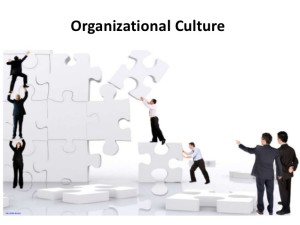Promoting Organizational Culture
According to the BusinessDictionary.com, an organizational culture is “the values and behaviors that contribute to the unique social and psychological environment of an organization. Organizational culture includes an organization’s expectations, experiences, philosophy, and values that hold it together, and is expressed in its self-image, inner workings, interactions with the outside world, and future expectations. It is based on shared attitudes, beliefs, customs, and written and unwritten rules that have been developed over time and are considered valid.”
Below are some tips on how to promote a world-class organizational culture:
1. Ensure that employees know the core values.
Ask an employee of any company if they know the core values of their company and the answer most likely will be in the negative. In my organizations, core values are simply hidden in a document collecting dust on the shelf. Once the employee goes through the first day of training, rest assured that they’ve forgotten the ABC of the core values introduced to them. The key to ensure employees know the core values of your organization is not just by reiterating them periodically but also celebrating them and rewarding those who align their work closely with the core values. Don’t abandon your core values just because you’re too busy with major work projects. Set aside a time because that’s the only way to ensure you and your team don’t forget such a crucial aspect of your organization’s culture.
2. Create an open-space concept within the office.
The days of strict meeting policies are long gone. Or at least they should be. If your organization relies on weekly or monthly scheduled meetings to provide and receive feedback, it may be too late! Don’t wait for something to go wrong to bring it up with your employees. Create an atmosphere where everyone looks forward to engaging with each other. As long as the subject matter is not sensitive, you can hold meetings anywhere—at their cubicles, in the lunchroom, or the hallway.
3. Enable change.
This applies not just to changes in organizational culture but any other aspect as well. Don’t manage change with a top-down approach. Instead, you can bring about change if you communicate to your employees what the change is, why it’s being made and what the outcome of the change will be. Your team will be able to adapt to the changes and even embrace them when you make each member an important part of the process, not just someone you can order around. Use rewards and recognition to promote the changes so that employees have the motivation to be open to the change.
4. Don’t manage, lead!
This is easy to say but hard to follow through. Ditch the manager title, and add the word leader in your email signature. The key to being an effective leader is to lead by example. Be transparent, be willing to hear new and differing ideas, communicate effectively and openly, and most importantly be the person that embodies your organization’s culture by bringing your company’s core calyes to life.

